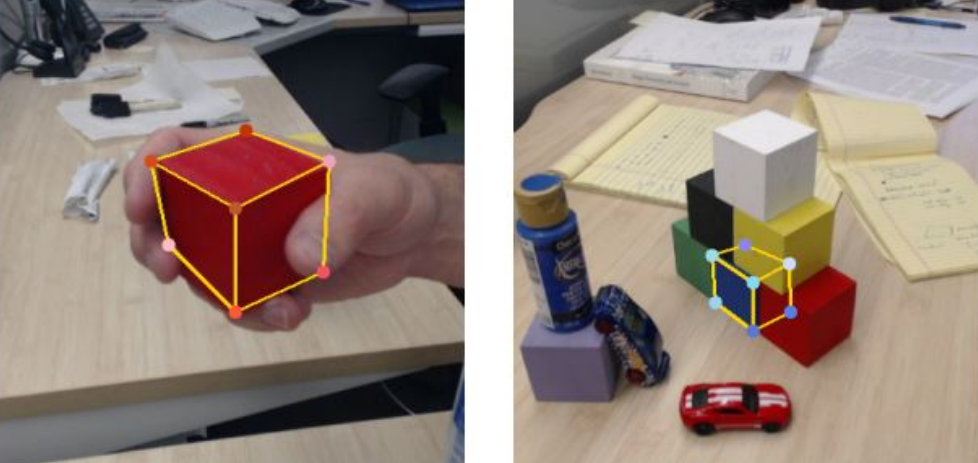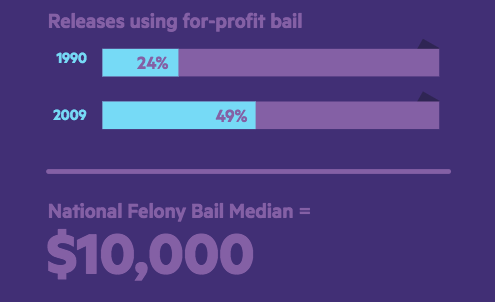Music
Trailers
DailyVideos
India
Pakistan
Afghanistan
Bangladesh
Srilanka
Nepal
Thailand
StockMarket
Business
Technology
Startup
Trending Videos
Coupons
Football
Search
Download App in Playstore
Download App
Best Collections
Technology
Industrial robots are typically all about repeating a well-defined task over and over again. Usually, that means performing those tasks a safedistance away from the fragile humans that programmed them. More and more, however, researchers are now thinking about how robots and humans can work in close proximity to humans and even learn from them. In part, thatwhat Nvidia new robotics lab in Seattle focuses on and the companyresearch team today presented some of its most recent work around teaching robots by observing humans at theInternational Conference on Robotics and Automation (ICRA), in Brisbane, Australia.
Nvidiadirector of robotics research Dieter Fox.
As Dieter Fox, the senior director of robotics research at Nvidia (and a professor at the University of Washington), told me, the team wants to enable this next generation of robots that can safely work in close proximity to humans. But to do that, those robots need to be able to detect people, tracker their activities and learn how they can help people. That may be in small-scale industrial setting or in somebodyhome.
While itpossible to train an algorithm to successfully play a video game by rote repetition and teaching it to learn from its mistakes, Fox argues that the decision space for training robots that way is far too large to do this efficiently. Instead, a team of Nvidia researchers led by Stan Birchfield and Jonathan Tremblay, developed a system that allows them to teach a robot to perform new tasks by simply observing a human.
The tasks in this example are pretty straightforward and involvenothing more than stacking a few colored cubes. But italso an important step in this overall journey to enable us to quickly teach a robot new tasks.
The researchers first trained a sequence of neural networks to detect objects, infer the relationship between them and then generate a program to repeat the steps it witnessed the human perform. The researchers say this new system allowed them to train their robot to perform this stacking task with a single demonstration in the real world.
One nifty aspect of this system is that it generates a human-readable description of the steps itperforming. That way, iteasier for the researchers to figure out what happened when things go wrong.
NvidiaStan Birchfield tells me that the team aimed to make training the robot easy for a non-expert — and few things are easier to do than to demonstrate a basic task like stacking blocks. In the example the team presented in Brisbane, a camera watches the scene and the human simply walks up, picks up the blocks and stacks them. Then the robot repeats the task. Sounds easy enough, but ita massively difficult task for a robot.

To train the core models, the team mostly used synthetic data from a simulated environment. As both Birchfield and Fox stressed, itthese simulations that allow for quickly training robots. Training in the real world would take far longer, after all, and can also be more far more dangerous. And for most of these tasks, there is no labeled training data available to begin with.
&We think using simulation is a powerful paradigm going forward to train robots do things that weren&t possible before,& Birchfield noted. Fox echoed this and noted that this need for simulations is one of the reasons why Nvidia thinks that its hardware and software is ideally suited for this kind of research. There is a very strong visual aspect to this training process, after all, and Nvidiabackground in graphics hardware surely helps.
Fox admitted that therestill a lot of research left to do be done here (most of the simulations aren&t photorealistic yet, after all), but that the core foundations for this are now in place.
Going forward, the team plans to expand the range of tasks that the robots can learn and the vocabulary necessary to describe those tasks.

- Details
- Category: Technology
Read more: Nvidia’s researchers teach a robot to perform simple tasks by observing a human
Write comment (91 Comments)After taking tens of thousands of crowd-funding pre-orders for a high-end pair of &3D sound& headphones, audio startup Ossic announced this weekend that it is shutting down the company and backers will not be receiving refunds.
The company raised $2.7 million on Kickstarter and $3.2 million on Indiegogo for their Ossic X headphones which they pitched as a pair of high-end head-tracking headphones that would be perfect for listening to 3D audio, especially in a VR environment. While the company also raised a &substantial seed investment,& in a letter on the Ossic website, the company blamed the slow adoption of virtual reality alongside their crowdfunding campaign stretch goals which bogged down their R-D team.
&This was obviously not our desired outcome. The team worked exceptionally hard and created a production-ready product that is a technological and performance breakthrough. To fail at the 5 yard-line is a tragedy. We are extremely sorry that we cannot deliver your product and want you to know that the team has done everything possible including investing our own savings and working without salary to exhaust all possibilities.&
We have reached out to the company for additional details.
Through January 2017, the San Diego company had received more than 22,000 pre-orders for their Ossic X headphones. This past January, Ossic announced that they had shipped out the first units to the 80 backers in their $999 developer tier headphones. In that same update, the company said they would enter &mass production& by late spring 2018.
In the end, after tens of thousands of pre-orders, Ossic only built 250 pairs of headphones and only shipped a few dozen to Kickstarter backers.
Crowdfunding campaign failures for hardware products are rarely shocking, but often the collapse comes from the company not being able to acquire additional funding from outside investors. Here, Ossic appears to have been misguided from the start and even with nearly $6 million in crowdfunding and seed funding, which they said nearly matched that number, they were left unable to begin large-scale manufacturing. The company said in their letter, that it would likely take more than $2 million in additional funding to deliver the existing backlog of pre-orders.
Backers are understandably quite upset about not receiving their headphones. A group of over 1,200 Facebook users have joined a recently-createdpage threatening a class action lawsuit against the team.
- Details
- Category: Technology
Read more: After tens of thousands of pre-orders, 3D audio headphones startup Ossic disappears
Write comment (99 Comments)Wake up in the wee hours of the morning on the East Coast, and you might get a chance to watch a rocket launch more than three tons of cargo for the International Space Station. Set for a 4:39 ET liftoff from NASAfacility on Wallops Island, Virginia, if the weather holds, this will be Orbital ATKninth cargo delivery to the ISS.
The Antares launch, which is the companyfirst since November, was initially scheduled for today, but was ultimately pushed back in favor of inspections and better weather. The ship will carry supplies, parts, gear and a trio of CubeSats (mini-satellites), designed for ISS science studies. CBS notes one particular quantum physics study that &will attempt to cool atoms to a billionth of a degree above absolute zero.&
If you&re already up that early on the East Coast and have a decent vantage point, look up. Things will start off small and build to something potentially spectacular. Space.com describes it as akin to a shooting star at first, building to something more like a comet, with the sun catching the rocketsmoky trail around four and a half minutes after liftoff.
The launch is one of 11 planned under a NASA contract, with potential to add six more supply missions for the ISS. SpaceX, for its part, is currently under contract for 20 such missions.
- Details
- Category: Technology
Read more: Orbital ATK is launching a cargo rocket for the ISS early tomorrow morning
Write comment (94 Comments)When we first told you about AT-TLTE-M Button, the information was socked away in a deluge of AWS Re:Invent announcements. The telecom giant was a bit more upfront when announcing its availability earlier this week — but just a bit.
After all, itnot a direct-to-consumer device. Unlike the product-branded hunk of plastic you can presently pick up from Amazon to refresh your supply of Goldfish crackers and Tide Pods, this onecurrently open to developers at companies looking to build their own. What it does have going for it, however, is LTE-M, a cheaper, lower cost version of 4G thatset to power a future generation of IoT devices.
That means it can be used for your standard Dash-like activities — letting customers replenish items with a press — and it can also be implemented in some more interesting scenarios, out of the bounds of regular WiFi. AT-T offers up a couple of case uses, including customer feedback in public venues and use in places like construction sites where home/office Wifi isn&t an option.
Of course, without the direct retail feedback loop, itnot really a Dash competitor — and besides, AWS is helping power the thing, so Amazonstill getting a kickback here. Oh, and then therethe price — the buttons start at $30 a piece, which amounts to a lot of Tide Pods. As such, we likely won&t see them take off too quickly, but they do provide an interesting usage as AT-T looks to LTE-M to push IoT outside of the home.
- Details
- Category: Technology
Read more: AT T launches its LTE-powered Amazon Dash-style button
Write comment (95 Comments)Although bitcoin and blockchain technology may not take up quite as much mental bandwidth for the general public as it did just a few months ago, companies in the space continue to rake in capital from investors.
One of the latest to do so isCircle, which recently announceda $110 million Series E roundled by bitcoin mining hardware manufacturerBitmain. Other participating investors includeTusk Ventures,Pantera Capital,IDG Capital Partners,General Catalyst,Accel Partners,Digital Currency Group,Blockchain Capital andBreyer Capital.
This round vaults Circle into an exclusive club of crypto companies that are valued, in U.S. dollars, at $1 billion or more in their most recent venture capital round. According to Crunchbase data, Circle was valued at $2.9 billion pre-money, up from a$420 million pre-money valuation in its Series D round, which closed in May 2016. According to Crunchbase data, onlyCoinbaseandRobinhood — a mobile-first stock-trading platform which recently made a big push into cryptocurrency trading — were in the crypto-unicorn club, which Circle has now joined.
But thatnot the only milestone for the world of venture-backed cryptocurrency and blockchain startups.
Back in February,Crunchbase Newspredictedthat the amount of money raised in old-school venture capital rounds by blockchain and blockchain-adjacent startups in 2018 would surpass the amount raised in 2017. Well, itonly May, and it looks like the prediction panned out.
In the chart below, you&ll find worldwide venture deal and dollar volume for blockchain and blockchain-adjacent companies. We purposely excluded ICOs, including those that had traditional VCs participate, and instead focused on venture deals: angel, seed, convertible notes, Series A, Series B and so on. The data displayed below is based on reported data in Crunchbase, which may be subject to reporting delays, and is, in some cases, incomplete.
A little more than five months into 2018, reported dollar volume invested in VC rounds raised by blockchain companies surpassed 2017totals. Not just that, the nearly $1.3 billion in global dollar volume is greater than the reported funding totals for the 18 months between July 1, 2016 and New YearEve in 2017.
And although CircleSeries E round certainly helped to bump up funding totals year-to-date, there were many other large funding rounds throughout 2018:
- $118 million raised by Orbs, a purported &consumer-ready blockchain& service set to launch in June.
- $75 million closed in a Series B roundfor Paris-based secure hardware wallet-makerLedger.
- $32 millionraised byProject Shivom, which claims to use two hyped technologies — blockchain and artificial intelligence — to analyze and protect genomic data.
- $16 million in a Benchmark-led Series A roundforChainalysis, a blockchain analysis platform.
There were, of course, many other large rounds over the past five months. After all, we had to get to $1.3 billionsomehow.
All of this is to say that investor interest in the blockchain space shows no immediate signs of slowing down, even as the price of bitcoin, ethereum and other cryptocurrencies hover at less than half of their all-time highs. Considering thatregulators are still figuring outhow to treat most crypto assets, massive price volatility and dubious real-world utility of the technology, it may surprise some that investors at the riskiest end of the risk capital pool invest as much as they do in blockchain.
Notes on methodology
Like in our February analysis, we first created a list of companies in Crunchbasebitcoin, ethereum, blockchain,cryptocurrency andvirtual currencycategories. We added to this list any companies that use those keywords, as well as &digital currency,& &utility token& and &security token& that weren&t previously included in the above categories. After de-duplicating this list, we merged this set of companies with funding rounds data in Crunchbase.
Please note that for some entries in Crunchbaseround data, the amount of capital raised isn&t known. And, as previously noted, Crunchbasedata is subject to reporting delays, especially for seed-stage companies. Accordingly, actual funding totals are likely higher than reported here.
- Details
- Category: Technology
On any given day in the United States, more than 450,000 people are behind bars awaiting their constitutionally mandated fair trial. None of them have been convicted of a crime — they&ve been accused of committing a crime, but no formal ruling of guilt or innocence has been made. That means these hundreds of thousands of people are incarcerated simply because they don&t have the financial means to post bail.
Bail was originally designed to incentivize people to show up for their court dates, but it has since evolved into a system that separates the financially well-off from the poor.It requires arrested individuals to pay money in order to get out of jail while they await trial. For those who can&t afford bail, they wind up having to sit in jail, which means they may be at risk of missing rent payments, losing their jobs and failing to meet other responsibilities.
Money bail is all too often a common condition to secure release from jail while a case is in progress. Cash bail systems result in leaving many people incarcerated, even though they haven&t been convictedof a crime.
The cash bail system in the United States is one of the greatest injustices in the criminal justice system, ACLU Deputy National Political Director Udi Ofer tells TechCrunch. Bail reform, Ofer says, is a&key way to achieve& the goals of challenging racial disparities in the criminal justice system and ending mass incarceration.
As we explored in &The other pipeline,& the criminal justice system in the United States is deeply rooted in racism and a history of oppression. Black and Latino people comprise about 1.5 million of the total2.2 million people incarcerated in the U.S.adult correctional system, or 67 percent of the prison population, while making up just 37 percent of the total U.S. population,according to the Sentencing Project.
With a criminal justice system that disproportionately affects people of color, itno wonder why the cash bail system does the same. For one, people of color are 25 percent more likely than white people to be denied the option of bail, according to a pre-trial study by Dr. Traci Schlesinger. And for the black people who are given the option to pay bail, the amount is 35 percent higher on average than bail for white men, according to a 2010 study.
The national felony bail median is $10,000. For those who can&t afford it, they have to rely on bail bond agencies, which charge a non-refundable fee to pay the required bail amount on the personbehalf.The bail bond companies, which are backed by insurance companies, collect between $1.4 billion and $2.4 billion a year, according to the ACLU and Color of Change.

Source: ACLU/Color of Change
And if bail bond companies are out of reach, those who are sitting in jail awaiting trial are more likely to be convicted of the crime they were charged with. The non-felony conviction rate rose from 50 percent to 92 percent for those jailed pre-trial, according to a study by the New York City Criminal Justice Agency. Along the way, leading up to the trial, some prosecutors incentivize peopleto plead guilty to the charges even if they&re innocent.
&Ittime to end our nationsystem of cash bail that lets the size of your wallet determine whether you are granted freedom or stay locked up in jail,& Ofer says. &Money should never decide a personfreedom yet thatexactly what happens every day in the United States.&
Pre-trial detention is also costly to local cities, counties and taxpayers.It costs about $38 million a day to keep these largely nonviolent people behind bars,according to the Pretrial Justice Institute. Annually, that comes out to about $14 billion to jail unconvicted people.
&The only people benefiting from bail is the for-profit bail industry,& Ofer said. &If we&re ever going to end mass incarceration in the United States, then we need to end cash bail.&
Bail reform is coming
Across the nation, bail reform has made its way into a handful of states.New Jerseybail reform law took effect last January; since then, its daily jail population has dropped 17.2 percent, and courts have imposed cash bail on just 33 defendants out of 33,400, according to the ACLU.
The ACLU itself is working on bail reform in 38 states, including California, where Ofer says he is optimistic reform will happen this year. Right now, a pre-trial release bill, Senate Bill 10, is up for consideration in the Assembly. The bill argues California should ensure people awaiting trial are not incarcerated simply because they can&t afford to pay bail. The bill also advocates for counties to establish pre-trial services agencies to better determine if people are fit to be released.
The bill, introduced by Senators Bob Hertzberg and others, is backed by the ACLU and Essie Justice Group, an Oakland-based organization that advocates for actual justice in the criminal justice system.
&Today we have a system that allows for people to be released pre-trial if they have enough money to afford their bail,& Essie Justice Group founder Gina Clayton tells TechCrunch. &Everyone else is required to sit inside of a cage without any way out.&
Essie Justice Group works mostly with and for women who have incarcerated loved ones. Often, the only way out for people is help from family or a plea deal, Clayton says.
&When we see people making the bail, we see that women are going into tremendous debt and are also beholden to an industry that has time and time again been cited and known to practice in quite an incredibly despicable way in terms of coercing and harassing their customers,& Clayton says. &When we think about who are the people who know about whatgoing on with bail, itblack and brown women in this country.&
For the past two years, Essie Justice Group held an action around MotherDay, with the goal of bailing moms out of jail or immigration detention. Last yearaction led to release of 30 women.

Photo via Essie Justice Group
Can tech help
The short the answer is maybe. Earlier this month, Google banned ads for bail bonds services, which Clayton says is the largest step any corporation has taken on behalf of people who have loved ones in jail. But while tech can help in some ways, Clayton has some concerns with additional for-profit entities entering the criminal justice system.
&There are definitely tech solutions that I&m very against,& Clayton said, but declined to comment on which ones in particular. &I will say that my energy around this doesn&t come from an imagined place. I&m seeing it happen. One of the things we&re seeing is companies who are interested in bail reform because they see another opportunity to make money off of families. Like, ‘let this person out, but have them, at a cost, check in with people I hire to do this fancy but expensive drug testing three times a week, pay for an ankle shackle or bracelet and GPS monitoring.& I think the companies that are making money off of those types of things are the ones we need to be wary of.&
There is, however, one for-profit company that immediately jumped to Claytonmind as being one doing actual good in the criminal justice space. That company is Uptrust, which provides text message reminders to people regarding court dates.
&I think that is a really great addition to the landscape,& Clayton says. &The reason I&m a proponent of theirs is because I understand their politics and I know what they won&t do, which is take it a step further or get involved with getting incentivized to add on bells and whistles that look less like freedom for people but more revenue for them.&
Uptrust, founded by Jacob Sills and Elijah Gwynm, aims to help people make their court dates. While the movies like to depict flight risks and people skipping town ahead of their court dates, failure to appear in court often comes down to a lack of transportation, work conflicts, not receiving a reminder, childcare or poor time management, Sills tells TechCrunch.
Thatwhere the idea came to humanize the system a bit more, by enabling public defenders to more easily connect with their clients. Uptrust is two-way in nature and reminds people on behalf of the public defender about court dates. Clients can also communicate any issues they may have about making it to court.
&If the public defender knows the client has an issue, they can usually get court moved,& Sills says. &But if they don&t have the information, they&re not going to lie on behalf of clients.&
Because public defenders don&t make much money, Uptrust doesn&t charge very much, Sills says.
&But they really care about the client and one of the things we saw with this was we needed to change the whole front end of the system to be less adversarial and more human,& Sills says.
In addition to text reminders, Uptrust enables public defenders to assist with other needs clients may have.
&A lot of stuff around bail reform is around risk assessment rather than need assessment,& Sills tells me. &But we saw a lot of these individuals have needs, like helps with rides, child care or reminders.&
Public defenders who are invested in the care of their clients can remind them via Uptrust to do things like ask for time off work or schedule child care.
For the end-user, the client, Uptrust is all text-based. For the public defenders, Uptrust offers a software solution that integrates into their case management systems.
Since launching in the summer of 2016 in CaliforniaContra Costa County, the court appearance rate improved from 80 percent to 95 percent, Sills says. To date, Uptrust has supported 20,000 people with a five percent FTA rate.
&As we improve product, if we can get [the FTA rate] down to 3 percent, you really can start taking that data and pushing forth major policy change,& Sills says.
Uptrustgoal is to shift from risk assessment to needs assessment and ensure people are supported throughout their interactions with the criminal justice system.
&Our view is in terms of bail reform, we need to make sure therenot a proliferation of things like ankle monitors and whatnot,& Sills says. &For us, success is really being a subcontractor to the community as well as working with the government. I think therea huge risk in bail reform as it relates to technology because people see it as a big business opportunity, If a company replaces the government, they may not have the communitybest interest in mind. So itimportant to keep in mind they have the communitybest interest in mind.&
Similar to Uptrust, a tech organization called Appolition works by operating within the confines of the system. Appolition, founded by Dr. Kortney Ryan Zieger, enables people to funnel their spare change into the National Bail Out fund. As of April, Appolition has facilitated over $130,000 to go toward bail relief. Ziegler was not available for comment for this story.
Promise, on the other hand, aims to provide an alternative to the cash bail system. In March, Promise raised a $3 million round led by First Round Capital with participation from from Jay-ZRoc Nation.
The idea is to offer counties and local governments an alternative approach to holding people behind bars simply because they can&t afford bail. With Promise, case managers can monitor compliance with court orders and better keep tabs on people via the app. GPS monitoring is also an option, albeit a controversial one.
Letsay you get arrested and end up having a bail hearing. Instead of asking you to pay bail, the public defender could suggest a pre-trial release with Promise. From there, Promise would work with the public defender and your case manager to determine your care plan.
&Itclear that our values are about keeping people out of jail,& Promise CEO Phaedra Ellis-Lamkins told me on an episode of CTRL+T. &Like, we&re running a company but we fundamentally believe that not just itmore cost effective but that itthe right thing to do.&
Instead of a county jail paying $190 per day per person, Ellis-Lamkins said, Promise charges some counties just $17 per person per day. In some cases, Promise charges even less per person.
Itthat for-profit model that worries Clayton.
&Whenever you bring in the for-profit ethos in a criminal justice space, I think we need to be careful,& Clayton says.
She didn&t explicitly call out any companies. In fact, she said she doesn&t feel ready to make a judgment on Promise just yet. But shehas a general concern of tech solutions that &dazzle and distract system actors who we really need to hold accountable and see operate in more systemic, holistic ways.&
Solutions, Clayton says, look like social safety nets like hospitals and clinics instead of jails.
&If we want to really move ourselves away from this path we&ve been on,& Clayton says, &which is towards normalizing state control of people then we should be really careful that our system that once looked like slavery to Jim Crow to mass incarceration doesn&t then become tech surveillance of all people.&
- Details
- Category: Technology
Read more: Bail reform has a complex relationship with tech
Write comment (95 Comments)Page 5341 of 5614

 5
5
















